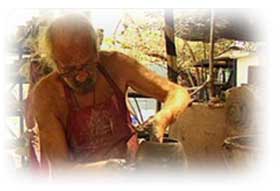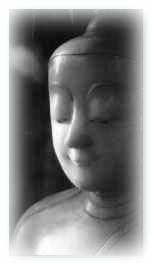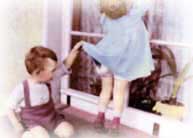Meditation Is Coming Home
“There are two planes in you: the plane of the mind, and the plane of the no-mind. Or, let me say it in this way: the plane when you are on the periphery of your being and the plane when you are at the center of your being. Every circle has a center – you may know it, you may not know it. You may not even suspect that there is a center, but there has to be. You are a periphery, you are a circle: there is a center. Without the center you cannot be; there is a nucleus of your being.
“At that center you are already a buddha, a siddha, one who has already arrived home. On the periphery, you are in the world – in the mind, in dreams, in desires, in anxieties, in a thousand and one games. And you are both.
“So it is possible that when I am talking about Zen masters you can feel: “Yes, it is true!” Not only is it intellectually true – you can feel it is existentially true. “Yes! This is what is happening to me also.” When listening to me, there are bound to be moments when you will see that you have been for a few moments like a buddha: the same grace, the same awareness, the same silence; the same world of beatitudes, of blessings, of benediction.
“There will be moments, glimpses of your own center. They cannot be permanent; again and again you will be thrown back to the periphery, and then it will look weird. Then you will see: “I am like the Emperor: not understanding at all; stupid, sad, frustrated; missing the meaning of life” – because you exist on two planes: the plane of the periphery and the plane of the center.
“But by and by the weirdness will disappear. By and by, you will become capable of moving from the periphery to the center and from the center to the periphery very smoothly – just as you walk into your house and out of your house. You don’t create any dichotomy. You don’t say, “I am outside the house so how can I go inside the house?” You don’t say, “I am inside the house so how can I come outside the house?” It is sunny outside, it is warm pleasant – you sit outside in the garden. Then it is becoming hotter and hotter, and you start perspiring. Now it is no longer pleasant – it is becoming uncomfortable: you simply get up and move inside the house. There it is cool; there it is not uncomfortable. Now, there it is pleasant. You go on moving in and out.
“In the same way a man of awareness and understanding moves from the periphery to the center, from the center to the periphery. He never gets fixated anywhere. From the marketplace to the monastery, from sansar to sannyas, from being extrovert to being introvert – he continuously goes on moving, because these two are his wings, they are not against each other. They may be balanced in opposite directions – they have to be; if both the wings are on one side, the bird cannot fly into the sky. They have to be balancing, they have to be in opposite directions, but still they belong to the same bird, and they serve the same bird. Your outside and your inside are your wings.
“This has to be very deeply remembered, because there is a possibility… the mind tends to fixate. There are people who are fixated in the marketplace; they say they cannot get out of it; they say they have no time for meditation; they say even if time is there they don’t know how to meditate and they don’t believe that they can meditate. They say they are worldly – how can they meditate? They are materialistic – how can they meditate? They say, “Unfortunately, we are extroverts – how can we go in?” They have chosen only one wing. And, of course, if frustration comes out of it, it is natural. With one wing frustration is bound to come.
“Then there are people who become fed up with the world and escape out of the world, go to the monasteries and the Himalayas, become sannyasins, monks: start living alone, force a life of introversion on themselves. They close their eyes, they close all their doors and windows, they become like Leibnitz monads – windowless – then they are bored.
“In the marketplace they are fed up, they were tired, frustrated. It was getting more like a madhouse; they could not find rest. There was too much of relationship and not enough holiday, not enough space to be themselves. They were falling into things, losing their beings. They were becoming more and more material and less and less spiritual. They were losing their direction. They were losing the very consciousness that they are. They escaped. Fed up, frustrated, they escaped. Now they are trying to live alone – a life of introversion. Sooner or later they get bored. Again they have chosen another wing, but again only one wing. This is the way of a lopsided life. They have again fallen into the same fallacy on the opposite pole.
“I am neither for this nor for that. I would like you to become so capable that you can remain in the marketplace and yet meditative. I would like you to relate with people, to love, to move in millions of relationships – because they enrich – and yet remain capable of closing your doors and sometimes having a holiday from all relationship so that you can relate with your own being also.
“Relate with others, but relate with yourself also. Love others, but love yourself also. Go out! – the world is beautiful, adventurous; it is a challenge, it enriches. Don’t lose that opportunity! Whenever the world knocks at your door and calls you, go out! Go out fearlessly – there is nothing to lose, there is everything to gain.
“But don’t get lost. Don’t go on and on and get lost. Sometimes come back home. Sometimes forget the world – those are the moments of meditation. Each day, if you want to become balanced, you should balance the outer and the inner. They should carry the same weight, so that inside you never become lopsided.
“This is the meaning when Zen masters say, “Walk in the river, but don’t allow the water to touch your feet.” Be in the world, but don’t be of the world. Be in the world, but don’t allow the world to be in you. When you come home, you come home – as if the whole world has disappeared.”
Osho, A Sudden Clash of Thunder, Talk #2
To continue reading – and see all the available formats of this talk: click here



